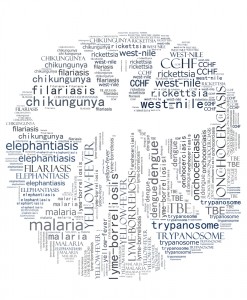Several months ago I attended a conference in Los Angeles where there were a variety of exhibitor booths typical of any convention nowadays. In one booth, the display consisted of an enlarged version of the game “Jenga”.
For those of you who are not familiar with Jenga, the idea is that a series of wood blocks are constructed typically in a pyramid shape and participants take turns at removing single blocks without having the structure collapse. The person who removes the “fatal” block that results in the structure collapse, loses the game of Jenga.
While Jenga is just a game, the lessons it provides are myriad and are particularly applicable in the world of healthcare infection prevention and control in which I work. In the world of infection prevention today, we employ a variety of what are called “interventions” to prevent the occurrence of an adverse event such as an infection.
Care bundles are a group of best evidence based interventions which when instituted together, result in maximum outcome benefit and hopefully the elimination, or at least the reduction of, a healthcare-associated infection (HAI) and/or other adverse event.
Bundle implementation has been shown to be effective at reducing rates of infections such as central line-associated bloodstream infections (CLABSIs), ventilator-associated pneumonias (VAPs), catheter-associated urinary tract infections (CAUTIs) and other nasty HAI acronyms and adverse events that you never want to acquire.
The problem with bundles is that they are only most effective when all parts and pieces (i.e. interventions) are implemented and are implemented correctly. The slightest omission or misstep in the bundle process greatly reduces the effectiveness of the bundle potentially causing the “Jenga” pyramid to collapse.
Today, the vast majority of healthcare clinicians are working tirelessly and relentlessly to ensure that adverse events resulting in a Jenga style pyramid collapse do not occur. The problem with healthcare, as with Jenga, is that it only takes one misstep to completely obliterate all the good work that has gone on before it.
The world of vascular access consists of 3 primary risk exposure points- insertion, maintenance, and adverse event response. Each of these risk exposure points consist of a number of “Jenga” block issues which must be constructed properly to prevent an adverse event and the collapse of the pyramid.
With insertion, we might look at issues such as hand hygiene, catheter selection, site preparation and location, stabilization, etc. and with catheter maintenance, consideration must be given to things such as device securement, removal/replacement, and dressing care, etc.
The problem- as with Jenga and as was so accurately stated in a recent WoCoVA forum- is that no matter how well a vascular access device is placed, the failure to properly maintain that device will result in the collapse of our pyramid and a potential adverse patient event. In most professions, meeting requirements 99% of the time would be a very favorable rating.
It is unfortunate that in healthcare, meeting the standard of care 99% of the time or completion of 99% of bundle interventions is not only a less than satisfactory outcome, but may result in a total collapse of the Jenga pyramid.
Learn more about vascular access related to healthcare associated infections (HAI’s).


